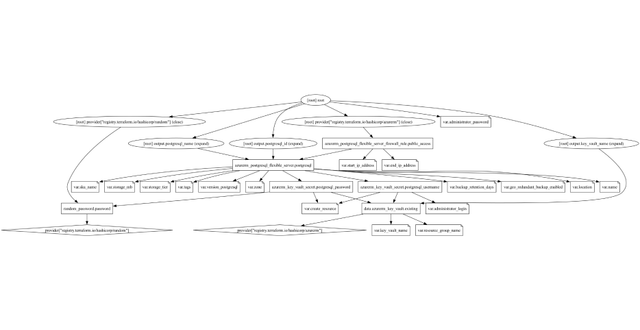Desplegar app en Okteto con Gitlab CI
 Daniel J. Saldaña
Daniel J. Saldaña- 2 de enero de 2023
- Puntuación de feedback

Este nuevo labs será la base de futuros nuevos post en el que iremos progresivamente desarrollando nuestro CI. En esta primera fase de nuestra PoC vamos a abordar los siguientes aspectos:
- Crear nuestra aplicación frontend.
- Generar la imagen Docker y subirla al Registry de Gitlab
- Generar nuestro Chart
- Desplegar en nuestro cluster de Kubernetes “en este caso Okteto”
- Validar los manifiestos de kubernetes con kubelinter
- Generar nuestra pipeline para Gitlab CI
- Definir dos entornos de despliegue
Aquí os dejo el repositorio que usaremos:
Daniel J. Saldaña / app-okteto · GitLab
Lo primero que hicimos fue generar nuestra aplicación, en este caso use Vite para crear una aplicación rápida en Vue.
npm create vite@latestAhora debemos crear nuevo Dockerfile
# Choose the Image which has Node installed alreadyFROM node:lts-alpine
# install simple http server for serving static contentRUN npm install -g http-server
# Make the 'app' folder the current working directoryWORKDIR /app
# Copy both 'package.json' and 'package-lock.json' (if available)COPY package*.json ./
# Install project dependenciesRUN npm install
# Copy project files and folders to the current working directory (i.e. 'app' folder)COPY . .
# Build app for production with minificationRUN npm run build
EXPOSE 8080CMD [ "http-server", "dist" ]Como último paso deberemos de crear nuestro chart de Helm.
helm create app-oktetoUna vez creado, deberemos de cambiar el repositorio de la imagen. En mi caso quedaría de la siguiente forma:
image: repository: registry.gitlab.com/danieljesus.sp/app-okteto pullPolicy: IfNotPresent # Overrides the image tag whose default is the chart appVersion. tag: 'latest'También cambiaremos en nombre de nuestra aplicación.
name: app-okteto¡Ahora sí! Ha llegado el momento de registrarnos en Okteto.
Una vez que tenemos nuestra cuenta, debemos de agregar generar las siguientes variables.
- ENV_KUBECONFIG, la podremos encontrar dentro de nuestro dashboard de Okteto en Settings.
- OKTETO_TOKEN, exactamente en el mismo sitio que la anterior, pero esta tendremos que generarla.
- OKTETO_USERNAME, será nuestro usuario.
Una vez que las tengamos, solo tendremos que darlas de alta en nuestro repositorio de Gitlab en Configuración y dentro en CI/CD apartado Variables. Ahora llego el momento de desarrollar nuestro pipeline. Como rasgos generales, veremos 4 stages. Según que rama se ejecutaran un jobs u otro. Los entornos de despliegue en el stages de review, irán cambiando según la rama desde la que despleguemos. Una vez transcurrido 30 minutos después de cada despliegue, se eliminará la aplicación desplegada.
stages: - lint - build - review - production
variables: REGISTRY_HOST: registry.gitlab.com IMAGE_DOCKER: docker:stable IMAGE_OKTETO: okteto/okteto:1.13.4 IMAGE_HELM: alpine/helm
kubelinter: stage: lint image: $IMAGE_DOCKER services: - docker:dind script: - docker run -v $PWD/charts:/dir -v $PWD/lint/config.yaml:/etc/config.yaml stackrox/kube-linter lint /dir --config /etc/config.yaml only: - branches except: - main
build: stage: build image: $IMAGE_DOCKER services: - docker:dind script: - docker login -u $CI_REGISTRY_USER -p $CI_BUILD_TOKEN $REGISTRY_HOST - docker build -t $REGISTRY_HOST/$CI_PROJECT_PATH:$CI_COMMIT_SHA -t $REGISTRY_HOST/$CI_PROJECT_PATH:latest -f Dockerfile . - docker push $REGISTRY_HOST/$CI_PROJECT_PATH:$CI_COMMIT_SHA - docker push $REGISTRY_HOST/$CI_PROJECT_PATH:latest only: - branches except: - main
deploy-review: stage: review image: $IMAGE_OKTETO variables: APP: $CI_COMMIT_REF_SLUG VA_ENV: review script: - okteto preview deploy $VA_ENV-$CI_COMMIT_REF_SLUG-$OKTETO_USERNAME --scope personal --branch $CI_COMMIT_REF_NAME --repository $CI_REPOSITORY_URL --wait environment: name: review/$CI_COMMIT_REF_SLUG url: https://${CI_PROJECT_TITLE}-${VA_ENV}-${CI_COMMIT_REF_SLUG}-${OKTETO_USERNAME}.cloud.okteto.net on_stop: stop-review only: - branches except: - main
stop-review: stage: review needs: ['deploy-review'] image: $IMAGE_OKTETO when: delayed start_in: 30 minutes variables: APP: $CI_COMMIT_REF_SLUG VA_ENV: review environment: name: review/$CI_COMMIT_REF_SLUG action: stop script: - okteto preview destroy $VA_ENV-$CI_COMMIT_REF_SLUG-$OKTETO_USERNAME only: - branches except: - main
deploy-production: stage: production image: name: $IMAGE_HELM entrypoint: [''] variables: VA_ENV: production environment: name: production url: https://${CI_PROJECT_TITLE}-${OKTETO_USERNAME}.cloud.okteto.net script: - export KUBECONFIG=${ENV_KUBECONFIG}:${KUBECONFIG:-$HOME/.kube/config} # "Simple" hack to dynamically set - sed -i 's/_CI_PROJECT_TITLE/'"${CI_PROJECT_TITLE}"'/' "charts/templates/NOTES.txt" - sed -i 's/_VA_ENV/'""'/' "charts/templates/NOTES.txt" - sed -i 's/_CI_COMMIT_REF_SLUG/'""'/' "charts/templates/NOTES.txt" - sed -i 's/_OKTETO_USERNAME/'"-${OKTETO_USERNAME}"'/' "charts/templates/NOTES.txt" - helm upgrade $CI_PROJECT_NAME ./charts --values=./charts/values.yaml --install --atomic only: refs: - main
uninstall-production: stage: production needs: ['deploy-production'] image: name: $IMAGE_HELM entrypoint: [''] when: delayed start_in: 30 minutes environment: name: production url: https://${CI_PROJECT_TITLE}-production-$CI_COMMIT_REF_SLUG-$OKTETO_USERNAME.cloud.okteto.net script: - export KUBECONFIG=${ENV_KUBECONFIG}:${KUBECONFIG:-$HOME/.kube/config} - helm uninstall $CI_PROJECT_NAME only: refs: - main次回まで


